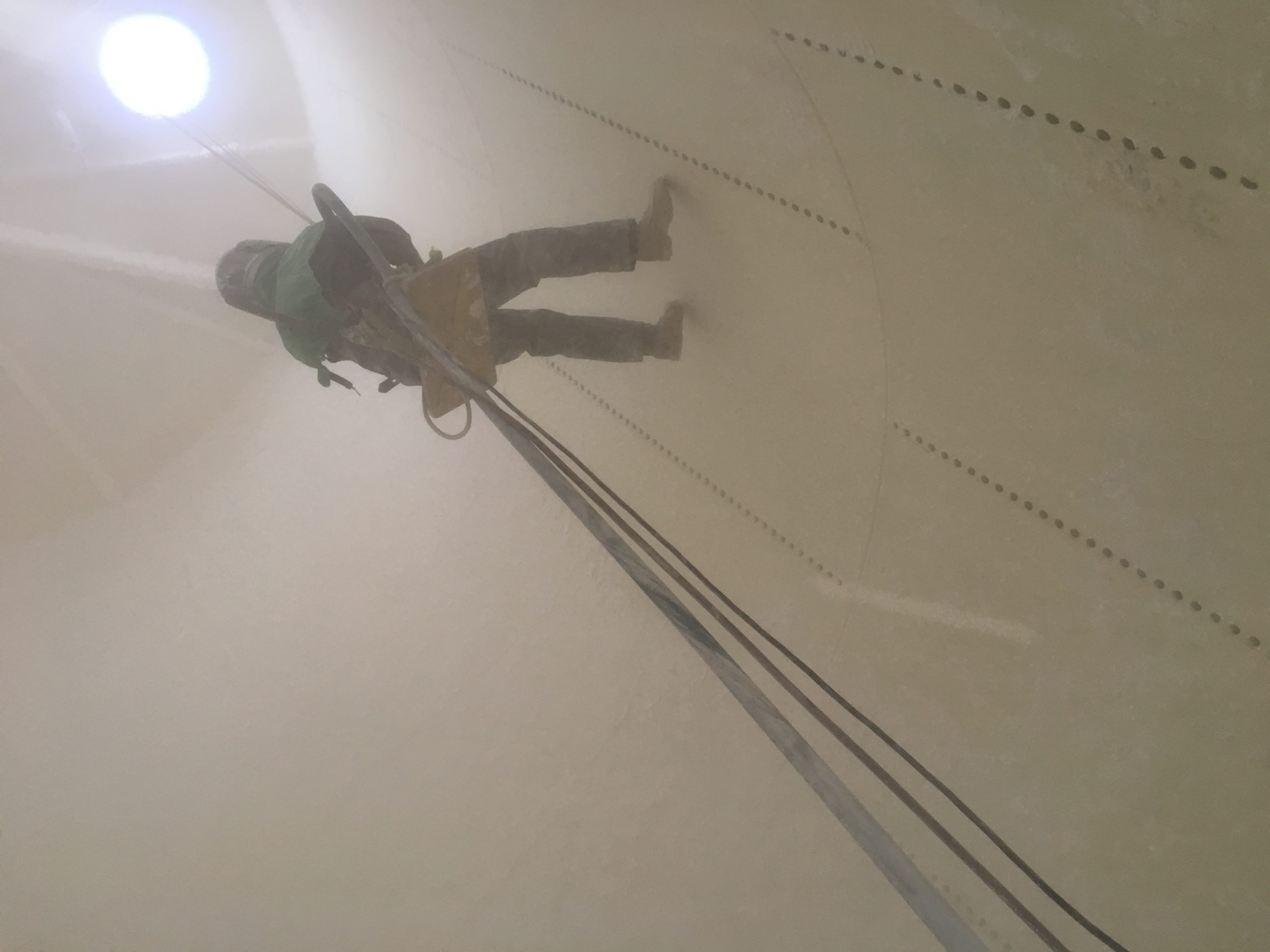Awareness and Safety – Sandblasting in a Confined Space
In 2018, 148 workers died from occupational injuries involving a confined space in the United States according to the U.S. Bureau of Labor Statistics. That is nearly 3 people a week! Occupational Safety and Health Administration (OSHA) estimates that over 4.8 million confined space entries are made every year resulting in more than 11,000 preventable injuries. With laws in place to protect workers and training required across every industry, why are there still so many preventable deaths and injuries? Understanding the risks and having procedures in place can prepare your team for any situation.
WHAT IS A “CONFINED SPACE”?
A “confined space” is an area that is not intended for people to occupy but that is large enough for you to enter and exit and perform work. It must also have limited means for entry and exit. Some examples of confined spaces are silos, storage bins, vaults, cold storage, ship holds, manholes, tanks, attics, crawl spaces, or tunnels.
Within the arena of confined spaces, OSHA requires an evaluation of the workspace to determine if risks are present that could result in serious injury or death. If those conditions exist it is considered a permit-required confined space. This means a qualified individual must complete the safety checklist before entry to mitigate risk.

If a confined space has any of the following four criteria, it is considered a permit-required confined space.
-
Contains or has the potential to contain a hazardous atmosphere
-
Contains a material with the potential to engulf someone who enters the space
-
Has an internal configuration that might cause an entrant to be trapped or asphyxiated by inwardly converging walls or by a 3 floor that slopes downward and tapers to a smaller cross-section
-
Contains any other recognized serious safety or health hazards
DANGER AND CHALLENGES OF BLASTING IN A CONFINED SPACE
Performing any work in a confined space is dangerous but the added safety risks of abrasive blasting can make it downright terrifying. Take for example removing corrosion from steel; you have the health hazard from media blasting. Performing the blasting 30’ up on scaffolding introduces a fall risk and it is on the inside of a grain bin so tack on confined space risk.
Air conditions in a confined space are a primary danger that gets a lot of attention for good reason. With limited entry that means the limited ability for ventilation. If a hazardous gas is present the impact is quick and the ability to escape the toxic environment can be delayed or difficult. The blasting process itself can also contribute to contaminants entering the air and poisoning the atmosphere within the space. For example, dry ice blasting is essentially cleaning with carbon dioxide. When the solid form impacts the surface it evaporates into the air. Thereby contributing to a buildup of carbon dioxide in the atmosphere.
Another byproduct of the blasting process is static electricity. This can build due to the friction created when the blast media meets the surface. If a combustible gas is present in the atmosphere within that confined space, there is the potential for explosion or fire. Dust accumulation from the abrasive blasting process could also create additional combustion risks.
Challenges of mobility proliferate when you are sandblasting in a confined space. Not only do you have to overcome getting in the space and being able to move about but you have additional equipment and many times you are creating waste from residue removal or as a byproduct of the blasting that then has to be removed using restricted means.
Once in a confined space and in a position to be able to complete the blasting, you need to see what you are doing. Often natural light is not available due to the restricted openings so a portable lighting solution must be provided. This light needs to be adequate to illuminate the space without straining vision or affecting the quality of work and be “hands-free” so workers can operate equipment and perform labor. Lack of lighting can also create fear putting working in a heightened emotional state.
Entrapment is a significant risk factor when entering a confined space, but there are additional physical dangers present as well. Many times cleaning is performed inside of tanks or other storage containers that use agitators to mix or rotate the product inside. While the contents have been emptied before entry, the equipment itself can pose a huge safety risk. After all, this equipment is designed to disrupt the contents inside.
SAFETY PRECAUTIONS
While confined space can be scary and intimidating, putting proper safety controls in place reduces the risks and enables quick action to minimize disastrous situations.
AIR CHECKS AND VENTILATION
Atmospheric hazards are the primary cause of unfavorable outcomes due to working in confined spaces. Harmful gasses can be colorless and odorless and even if they are detectable there is no way to know the extent without instrument testing. Monitoring includes oxygen levels as well as the presence of flammable gases. This testing and evaluation must be complete before entry and is done continuously throughout the project.
Mechanical ventilation is the preferred method of correcting any atmospheric concerns. Blowing fresh air displaces the hazardous gas and lowers its concentration within the confined space. As an extra precaution, the hood each blaster is required to wear as part of their PPE (personal has fresh air being pumped into it.
ISOLATE AND CONTROL

Once the confined space has been evaluated for risks, it is important to isolate the space to prevent controllable hazards. Power to any equipment associated with the confined space must be disabled. In the storage tank example provided above, performing a lockout/tagout of the fill mechanism and agitator are necessary.
TRAINED TEAM THAT IS SERIOUS ABOUT SAFETY
On each confined space job, the supervisor is responsible for completing the permit which includes checking air quality. In addition, the safety attendant monitors the workers and is available to call for help. There must always be an outside attendant. They should never enter the space in case of an emergency but may be needed to assist with retrieval. Above all else is communication. It is the most important safety procedure.
Even with our training and precautions, we also find it is best practice to make the local fire department aware of the job we are performing in the confined space and request that they have a safety extraction team available should they receive a call.
TRAINING VERSUS EXPERIENCE
All members of our team are trained and qualified to complete the necessary safety protocols. However, there is a difference between taking a training course and having the experience and a company culture that emphasizes safety. Working in confined spaces is something the team at Blast It Clean does nearly every week. Due to the nature of our work, the PPE is already a standard requirement so many times we are just adding air monitors and lighting to our equipment load. We are familiar with the risks and steps we can take to minimize them. It doesn’t matter if it is a one-time silo restoration or a weekly tank cleaning, confined space safety must be followed every time.
If you have a confined space that needs a team of professionals, call Blast It Clean for stripping, cleaning, and painting.

Hello could you tell me if a sentary is mandatory to sandblast inside a small confined space in Australia
Thankyou Tim Atkins
We are not quite sure what you mean by “sentary” but we do not service in Australia. I would look at confined space requirements for Australia on Google if you can 🙂 Sorry we could not be of more help.